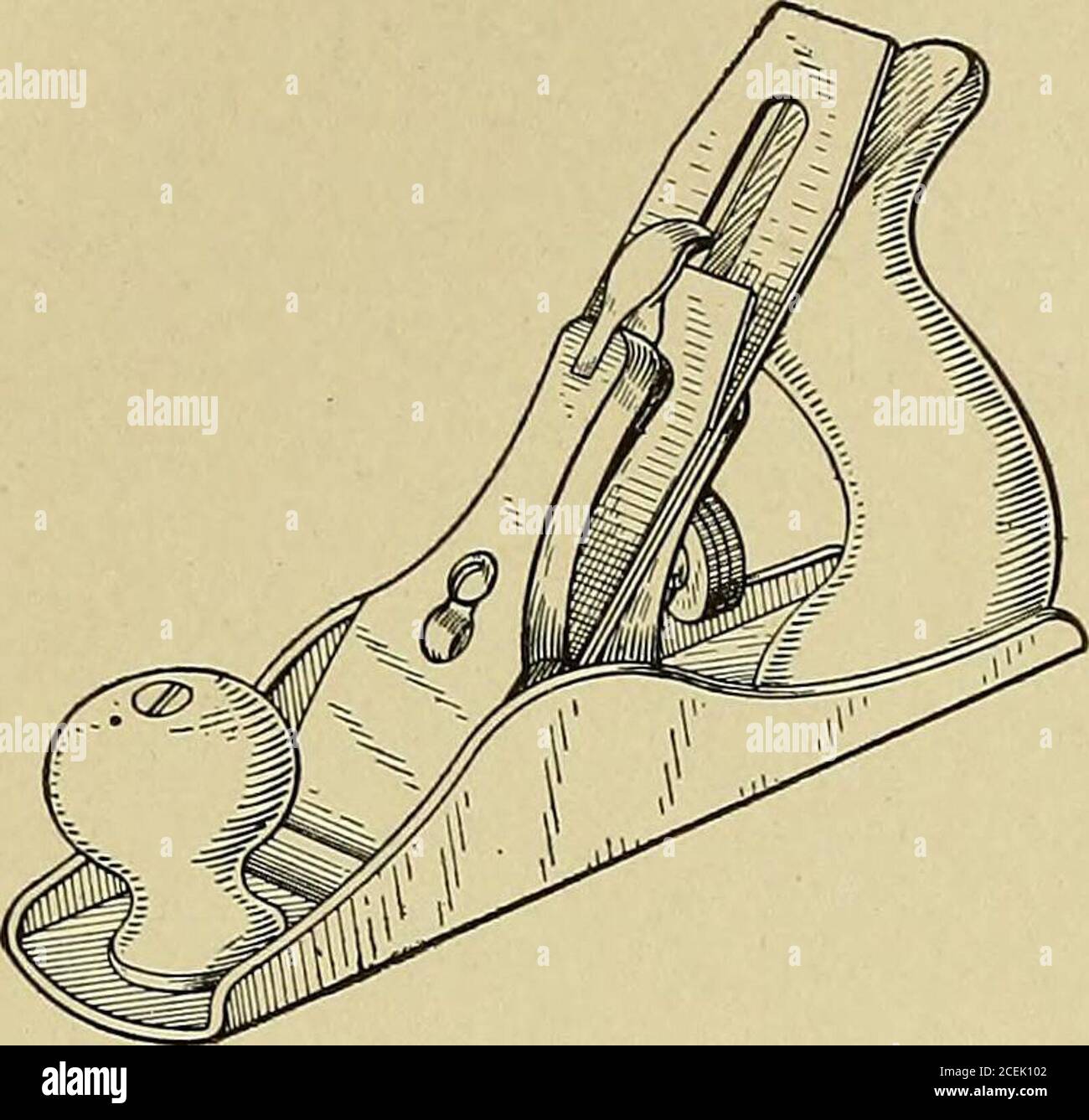. Cyclopedia of architecture, carpentry, and building; a general reference work ... g plane is usuallymuch smaller than the jack plane, as it is not expected to take off 47 38 CARPENTRY so much material and there does not have to be so much leverage.In construction it is similar to the jack plane, and may be made ofeither wood or iron. Very often, however, it is without a handle, as no great force is required to oper-ate it. The trying plane is longerthan the jack plane and is usedafter it so as to obtain a truersurface on the piece of timber thanis possible with the jack plane.It is also used

Image details
Contributor:
Reading Room 2020 / Alamy Stock PhotoImage ID:
2CEK102File size:
7.1 MB (266.5 KB Compressed download)Releases:
Model - no | Property - noDo I need a release?Dimensions:
1613 x 1548 px | 27.3 x 26.2 cm | 10.8 x 10.3 inches | 150dpiMore information:
This image is a public domain image, which means either that copyright has expired in the image or the copyright holder has waived their copyright. Alamy charges you a fee for access to the high resolution copy of the image.
This image could have imperfections as it’s either historical or reportage.
. Cyclopedia of architecture, carpentry, and building; a general reference work ... g plane is usuallymuch smaller than the jack plane, as it is not expected to take off 47 38 CARPENTRY so much material and there does not have to be so much leverage.In construction it is similar to the jack plane, and may be made ofeither wood or iron. Very often, however, it is without a handle, as no great force is required to oper-ate it. The trying plane is longerthan the jack plane and is usedafter it so as to obtain a truersurface on the piece of timber thanis possible with the jack plane.It is also used for edging boards, and it is narrower than either thejack plane oi- the smoothing plane.Figs. 27 and 28 show two wood-bottom smooth planes, one witha handle and one without, andFig. 29 shows a smooth plane with, an iron bottom.In Fig. 30 is shown a sectional view of both a wood and aniron smooth plane, with the various pieces numbered, and in Fig. 31are shown some of these same pieces separately with the samenumbers attached to each. The names of the various parts are asfollows:. Fig. 29. Iron-Bottom Smooth Plane